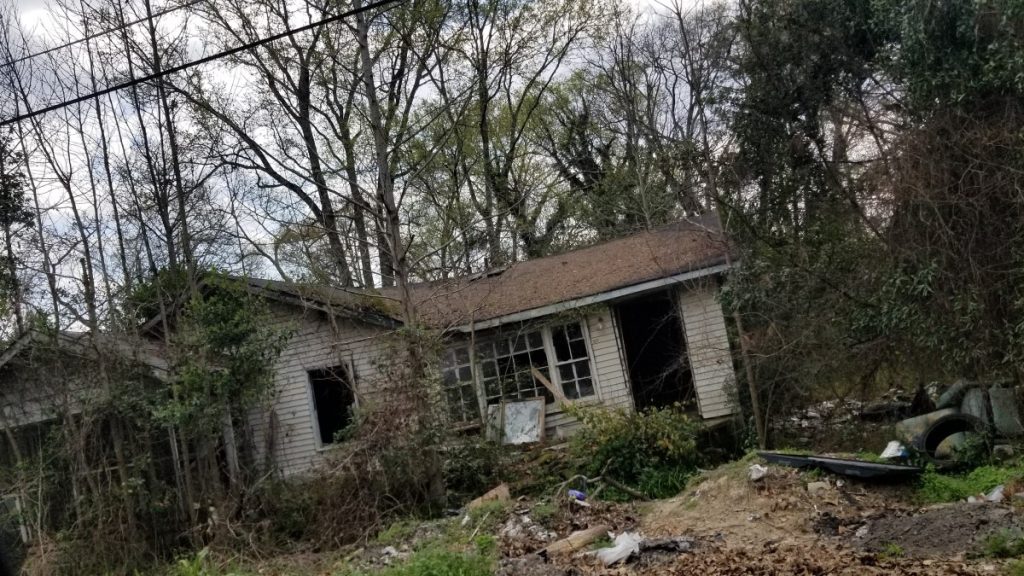Why don’t more people invest in rental properties? There are many drawbacks to owning rental houses, but effectively overcoming these drawbacks will reward you with exceptional gains. I have amassed over 70 rental properties and often wondered why more people aren’t doing it. Now I know the answer.
The main reasons more people do not invest in rental properties are: being a landlord is a hassle, the profit potential is small compared to other options, and real estate is not a liquid investment.
I have been investing in rental houses for over 15 years, and I agree with these objections. However, I have continued to invest and have built an extensive portfolio that produces an exceptional return. I have figured out how to overcome these drawbacks, and I will show you how.
1. Being a Landlord is a Hassle

Why don’t more people invest in rental properties? One reason is that they want to avoid the hassle of being a landlord. Well, it definitely is a hassle, and here are the time-consuming and challenging tasks that must be accomplished.
Maintenance and Repairs
As a landlord, your primary obligation is to handle property maintenance and repairs. This often results in calls at all hours, followed by late-night trips with a plunger in hand. Addressing maintenance issues is the most aggravating aspect of being a landlord.
Finding Tenants
You will need to market the property to find tenants, which most likely will require that you show the house multiple times. After receiving an application, you must screen the tenant and get a lease properly signed. This work is not difficult, but it is time-consuming.
Collecting Rent
Rent must be paid, and unfortunately, not all tenants pay on time. As a landlord, you become a quasi bill collector and must ensure that the rent is paid. Collection money is a stressful task, but it must be done for your business to be profitable.
Easing the Hassle of Being a Landlord
Being a landlord is a hassle if it’s not done correctly. Fortunately, there are ways to reduce the aggravation to a manageable level. Many people will suggest you hire a property management company, but in most cases, this option provides very little value. I have written an article that describes a better approach to property management.
Maintenance and Repairs
Maintenance and Repairs is the biggest headache a landlord will face. Fortunately, this can be easily handled with a 3-step process to deal with a tenant’s maintenance and repair calls.
- Never give out your phone number. You should set up a business phone line just for the maintenance calls and only allow it to receive voicemail. Optionally, you can use an answering service at this phone number. Either way, you want to be notified when a maintenance call arrives.
- Listen to your maintenance request calls, and then call a contractor to do the work.
- Let the contractor call the tenant, schedule the job, and perform the work.
Before the tenant signs the lease, explain this approach. Let them know this is the best way to get service because if one person isn’t available, another will handle it. Plus, they don’t have to rely on you to adequately explain the issue to the contractor.
When starting, you may not have a list of contractors, but that is easy to build when you initially get the house ready. You will already have that list if you have followed my advice never to do any maintenance work yourself. Once I had ten houses, I switched these notifications to go directly to my main contractor and copy me (so I knew about the issue). The contractor would call me if he couldn’t do the job, and I would find someone else.
Finding Tenants
Finding tenants is easier when you stick to getting the tenant with a “For Rent” sign in front of the property. If all your tenants start by seeing the sign, they already know the area and what the house looks like. This avoids time-consuming showings that end with the prospective tenant not liking the neighborhood, yard, or house color. I only use other marketing methods if this doesn’t work.
Set up a dedicated phone number on the “For Rent” sign. This phone line should go to a message that gives all the details about the house; if something isn’t satisfactory, the caller can hang up. The message should end by giving them the time of an open house. With this approach, I avoided the time-consuming tasks of fielding calls from possible tenants.
For the showing of the property, it’s best to schedule an open house. You can host the open house a few times weekly to let the prospects walk through the house. You should be there to answer questions, but there is no need to walk each tenant through the house. Be ready with an application for anyone that wants to rent the house. The next step is to pick a qualified tenant from the application pool, and this step is over.
Remember, if you set your rent too high, it will be harder to get a tenant. For this to go smoothly, you need to set your rent at the market rate of similar properties in the area. If you need help setting the rent, check out my advice for finding the market rent for a rental house.
Collecting Rent
The best way to collect the rent is not to collect the rent; let it come to you. When your tenant misses a payment, you should start legal proceedings as quickly as legally possible. The laws in each municipality are different; follow the spirit of this solution while adhering to local rules and regulations. Here are the four steps to efficiently collect your rental house’s rent.
- Have the tenant mail the rent or make an automated payment. Never have them bring you the rent, and never go to collect it personally.
- Never have a grace period. Change the due date if you want the tenant to have a few extra days.
- If the rent has not been received by the due date, send a letter demanding payment in 5 days. This letter should also serve as your eviction notice. Online options are available to send the letter; you are not required to print it and go to the post office.
- If rent is not received by the date in the letter, file for eviction and add this fee to their balance. You can always stop the eviction if they pay. You can file an eviction online in many locations, and there is no better collection call than the sheriff tacking the eviction notice to the door.
For collecting the rent, your goal is to avoid talking to the tenant and falling prey to their story. The issue is that the rent wasn’t paid, and why it wasn’t paid is irrelevant. If you want to work out a payment plan, I suggest you still start the eviction, and I explain why in my guide for dealing with non-paying tenants.
2. Low Returns on Rental Houses

Why don’t more people invest in rental properties? They hear that the returns aren’t worth it. Well, the returns on rentals are not spectacular. An academic study Rental Yields and HPA: The Returns to Single Family Rentals, found that the total return on rental properties is 9.5% to 10%, including both rental yield and appreciation. The stock market returns about 10.5% when dividends are reinvested.
Investing in a broad market index fund is simple and hassle-free. Investing in single-family rentals is time-consuming and requires ongoing work. Putting in the work needed to manage a rental portfolio should give you excess returns, and the data shows that it doesn’t
Amplifying the Return on Rental Houses
Combining the profits from rent and the property appreciation gives you about a 10% return on the value of your rental property. We must remember that this return is based on the property’s market value, and a real estate investor should never pay market value for a property.
Returns of rental properties can be amplified by purchasing below the market value. Assume you have a property worth $100,000 that returns 10% per year, which is a $10,000 profit. This rate of return can be amplified by purchasing the property at a lower price. The table below shows the returns at different purchase prices.
| Purchase Price | Rental Yield and Property Appreciation |
| $100,000 | 10.00% |
| $90,000 | 11.11% |
| $80,000 | 12.50% |
| $70,000 | 14.29% |
| $60,000 | 116.67% |
| $50,000 | 20.00% |
| $40,000 | 25.00% |
If you purchase a house for 50% of its value, you will average an astonishing 25%. Finding such a deal is difficult, but it’s not impossible. The primary job of a real estate investor is finding undervalued properties and then altering them to realize their true value. This usually means finding a house in terrible condition and managing a significant renovation effort. With this approach, spending less than half of the property’s market value is not unheard of. This is the business of the “We Buy Ugly Houses” franchise, and the average real estate investor can replicate it.

Finding deals in the stock market is much more difficult. An investor must value the company more accurately than the market in general. If this isn’t difficult enough, they must purchase the stock and hold it until the market realizes its value. There are teams of highly paid analysts working on this with limited success. As a result, it is tough for the average investor to beat the market.
Unlike ascertaining the actual value of a company, rental houses are much easier to value. The selling price of similar homes are readily available, and many online sources can determine a property value with surprising accuracy. Once you know the actual value, half of the battle is won.
3. Lack of Liquidity

Why don’t more people invest in rental properties? They have heard it’s not a liquid invest. What does that mean?
Liquidity: The ease at which an asset can be converted to cash without reducing its market value.
Market value: The probable price that a property should sell for after it has been exposed to the market for a reasonable period
Rental houses are an illiquid investment. When a rental house owner needs cash, they can’t quickly sell that property for its market value. Selling a house often takes months unless the owner drops the price to a fraction of market value. This contrasts with the stock market, where all but the largest investments can be effortlessly sold for market value within a few minutes.
Improving the Liquidity of Rental Property
Little can be done about the actual liquidy of the house itself, but there is a technique that can mimic a liquid asset. That technique is the equity line of credit. With an equity line of credit, the borrower is approved for a credit limit based on their property’s equity, and they can then borrow against that credit limit for any purpose.
With an equity line of credit, the borrower only pays interest on the amount borrowed rather than on the entire credit limit. When cash is needed, the rental house owner borrows against the line of credit. Later, if the money is no longer needed, the owner can pay down the line of credit to reduce the interest expense. Throughout the credit line term, they can repeat this process as often as needed.
With an equity line of credit, the rental property owner has unleashed the cash value in the house without having to relinquish the property. While this isn’t the same as selling for cash, it mimics the effect of having a liquid asset. Best of all, when the cash crunch ends, the owner still has the property.
Conclusion
While investing in rental property can be an excellent way to generate income and build long-term wealth, there are also some potential drawbacks to consider. The disadvantages below are the three main reasons people avoid investing in rental properties.
- Being a landlord is a hassle
- Low returns compared to other options
- Lack of liquidity
These drawbacks are why more people invest in rental properties. However, investing in rental property can be a great way to build wealth over the long term, but it’s essential to be aware of these potential drawbacks and be prepared to manage them effectively. This article explains these drawbacks in detail and presents a way to overcome them.




